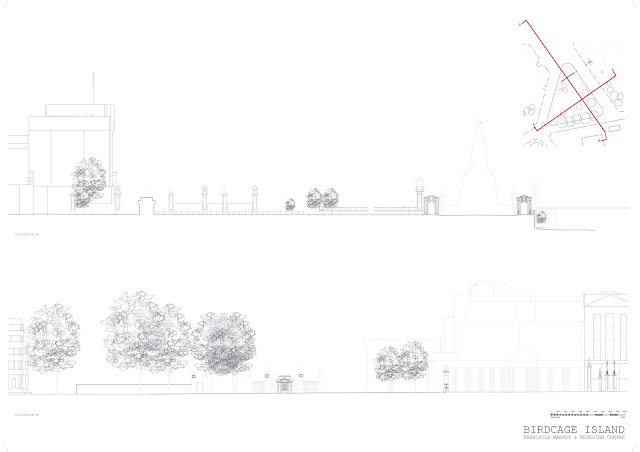

MUSEUM OF ABANDONED MEMORIES
A MEMORY CLINIC FOR DEMENTIA PATIENTS
Both memory and sense of place prominently involve the same part of the brain – the hippocampus.
"Our memory of events may depend upon a strong sense of place, and
by extension, our sense of place may be influenced by the integrity
of the memories formed there."
Sternberg, Esther M. and Wilson, Matthew A. Neuroscience and Architecture:
Seeking Common Ground. Cell 127, Elsevier Inc. October 20,
2006.)
The main objective of my research is an exploration of the interior cityscapes of the mind affected by dementia.
The project intends to get a deeper understanding and architecturally visualise different symptoms such as
Memory loss
Disorientation (time and place)
Confusion
Repetition
Disconnection
Hallucination
and different stages of progression that affect dementia sufferers, their mind and behaviour.
It is an open-archive curated by the public, for the public, for the deposition and preservation of memory. It provides the academic community with a specialised repository of relics and artefacts - a researcher’s vast resource of collective material history. On the other hand it functions as Memory clinic and a mnemonic device for Londoners.
Many exhibits will have been, in fact, formally part of other less well known collections of dementia patients and
their families and will be subsequently consolidated into the single collection of memories and fragments of London which we will have come to know as The Museum of Abandoned Memories and thus configured, will hopefully receive great public acclaim, raise a greater awareness of the life with dementia as well as much discussion in scholastic circles. The Museum aspires to preserve something of the flavour of its roots in the early days of the history of a museum, London itself and most importantly lives and memories of dementia patients.
SEMESTER 1
BIRDCAGE ISLAND FREECYCLE MARKET
POST-CAPITALIST SOCIAL (R)EVOLUTION
As the economic crisis meets the environmental crisis,
here in the UK and the rest of the Western world, where the notion of
capitalism is so ingrained that it has become part of who we are, we are
largely unaware that this very system might be the cause of the major problems
and we struggle to imagine life in a post-capitalist society.
Capitalism is considered a socio-economic system,
therefore not just a way of earning money and making a living. This is because
it is a way of thinking about social organisation. In capitalism, the motive
for producing goods and services is to sell them for a profit, not to satisfy
individual’s needs. This leads to a focus on consumerism, with people primarily
defining themselves within society and social classes based on what they own
rather than what they do.
However, it is also possible (at least in theory) to have
a free market economy that is not capitalist. Such a ‘market economy’ would
involve individuals each producing a particular product that they would
exchange. There would be no profit-making and no class division—just independent
producers exchanging goods for their mutual benefit. But it is doubtful whether
such economy has ever existed. The nearest that may have recently come to it
would have been in some of the early colonial settlements in North America. I’m
not certain that it is a viable alternative for modern society when it comes to
new production. Such a system might also lead to capital accumulation and
profit making—the definitive features of capitalism but similar idea might be
worth testing. As we live in the Age of Excess and as any environmentalist or
social scientist would say disapprovingly, we cannot afford to keep producing
disposabilities. Lets circulate the excess.
One man’s rubbish other man’s treasure!
Architecturally and structurally, the Freecycle Market,
Birdcage Island is a parasite, using the existing wall and gates to support
itself. All building materials are salvaged, donated and simply incorporated
into the design. The design of the Freecycle Market is never finalised, it does
not stay the same for long. It involves, it unfolds according to its needs.
There is a
possibility that every new element to the Freecycle Market’s structure may
create its instability or helps create new configuration. Thus the appearance
of function is subtly subverted by the new elements ability to question. If the
change is great enough then the whole structure may be moved to change or at
least question.


































































































No comments:
Post a Comment